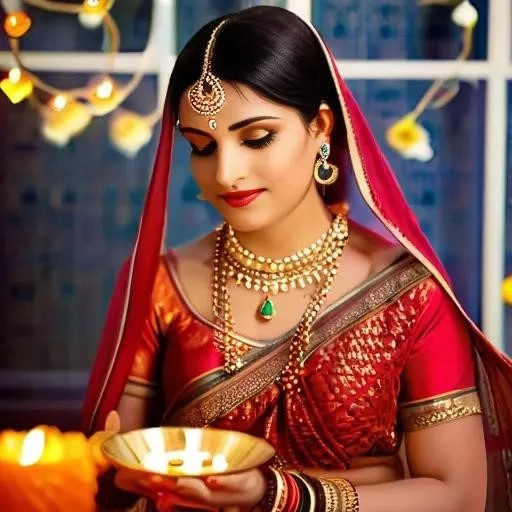Today’s Date: 09/20/2025
In a world constantly accelerating, ancient traditions often provide a grounding anchor, reminding us of enduring values and profound connections. One such tradition, the vibrant Hindu festival of Teej, stands as a powerful testament to love, devotion, and the unbreakable bond between husband and wife. Far more than just a day of fasting, Teej, particularly through the heartfelt “Teej Wishes For Husband” exchanged, has evolved into a dynamic celebration that profoundly strengthens marital ties, fostering an optimistic outlook on shared futures and mutual well-being. This cherished festival, observed with fervent enthusiasm across northern India, beautifully intertwines mythological narratives with contemporary expressions of affection, creating a tapestry of cultural richness and personal commitment.
As the auspicious month of Sawan unfolds, women across the nation meticulously prepare for this sacred observance, dedicating themselves to Goddess Parvati and Lord Shiva. Their prayers, traditionally culminating in heartfelt wishes for the longevity, health, and prosperity of their husbands, are not merely ritualistic; they are deeply personal affirmations of love and partnership. From the verdant celebrations of Hariyali Teej, observed on July 27, 2025, to the profound devotion of Hartalika Teej on August 26, 2025, and the unique observances of Kajari Teej, each iteration reinforces the sanctity of marriage. These festivals, steeped in history and spiritual significance, offer a unique opportunity for couples to reaffirm their vows, celebrating a bond as divine and enduring as that of Shiva and Parvati themselves.
Understanding Teej: A Festival of Devotion and Marital Bliss
| Attribute | Details |
|---|---|
| Festival Name | Teej (encompassing Hariyali Teej, Hartalika Teej, and Kajari Teej) |
| Primary Deities | Goddess Parvati (Teej Mata) and Lord Shiva |
| Key Significance | Celebrates the reunion of Lord Shiva and Goddess Parvati; women fast and pray for the longevity, good health, and prosperity of their husbands and for marital bliss. Unmarried girls pray for a good husband. |
| Observance | Primarily observed by women in North Indian states like Rajasthan, Uttar Pradesh, Madhya Pradesh, and Bihar. |
| Traditional Activities | Fasting, applying mehendi, wearing traditional attire, singing folk songs, dancing, swinging on jhulas, temple visits, special processions. |
| Next Major Dates (2025) |
|
| Official Reference | India.gov.in ‒ Art & Culture: Festivals (General reference for Indian festivals) |
The mythological narrative underpinning Teej is incredibly compelling, centering on Goddess Parvati’s unwavering penance to win Lord Shiva as her husband. Her steadfast devotion, enduring 108 births until her wish was granted, serves as a powerful archetype for women observing Teej. This ancient tale, deeply embedded in the cultural consciousness, transforms the act of fasting and praying into a profound spiritual journey, mirroring Parvati’s tenacity and ultimate triumph. Consequently, the “Teej Wishes For Husband” become more than mere sentiments; they are imbued with generations of spiritual energy, resonating with a timeless commitment to marital harmony and familial well-being.
In contemporary society, where relationships navigate complex modern challenges, the significance of festivals like Teej often intensifies, providing vital moments for introspection and connection. “The deliberate act of observing Teej, especially articulating those heartfelt wishes for one’s husband, acts as a powerful reaffirmation of vows,” explains Dr. Anjali Sharma, a renowned sociologist specializing in cultural traditions. “It’s a pause button in our busy lives, compelling couples to appreciate their bond and articulate their love in a deeply meaningful, almost sacred, way.” This perspective highlights the festival’s role not just as a religious observance but as a remarkably effective tool for emotional and relational enrichment, fostering a shared sense of purpose and affection.
Beyond the personal devotion, Teej is a spectacle of vibrant community celebration. Across Rajasthan, for instance, royal palaces and ancient temples host magnificent processions of Teej Mata, adorned with breathtaking grandeur, drawing devotees and tourists alike. Women, dressed in resplendent traditional attire, their hands intricately adorned with mehendi, gather to sing folk songs, perform spirited dances, and enjoy swings tied to trees. These collective activities, pulsating with joy and camaraderie, reinforce community bonds and provide a shared cultural experience that transcends individual households, painting a vivid picture of collective happiness and spiritual unity. By integrating these age-old customs with modern expressions of love, Teej continues to thrive, adapting gracefully to the changing times.
Looking ahead to 2025 and beyond, the enduring appeal of Teej, particularly the cherished tradition of “Teej Wishes For Husband,” is undeniable. As society evolves, so too does the interpretation of such festivals, yet their core message of love, devotion, and partnership remains profoundly relevant. Whether it’s the simple, heartfelt prayer for a husband’s health or an elaborate celebration of marital milestones, Teej offers a powerful platform for expressing enduring affection. This festival, bridging the spiritual with the deeply personal, promises to continue enriching countless lives, inspiring generations to come to cherish and celebrate the extraordinary journey of marriage with unwavering optimism and boundless love.

